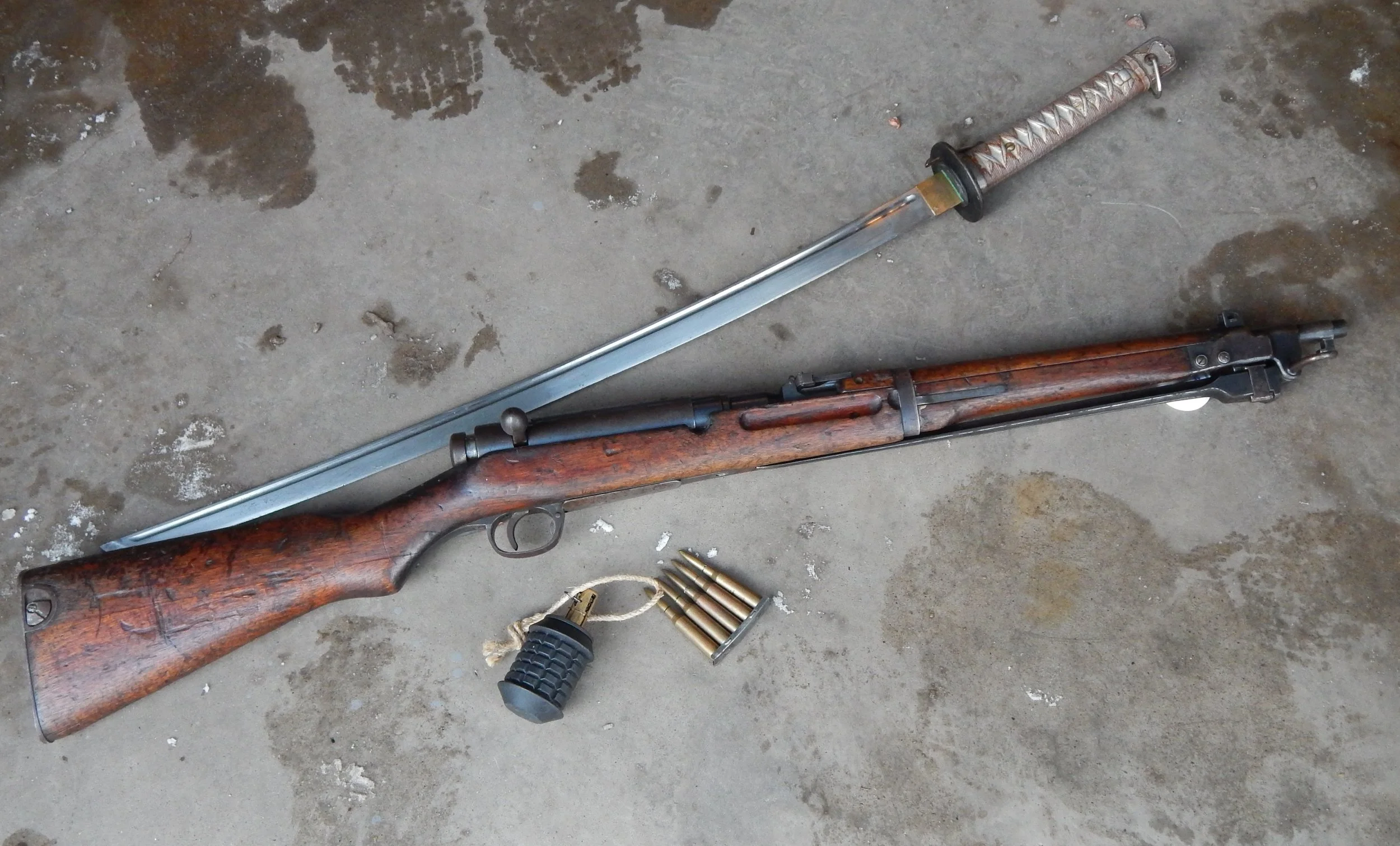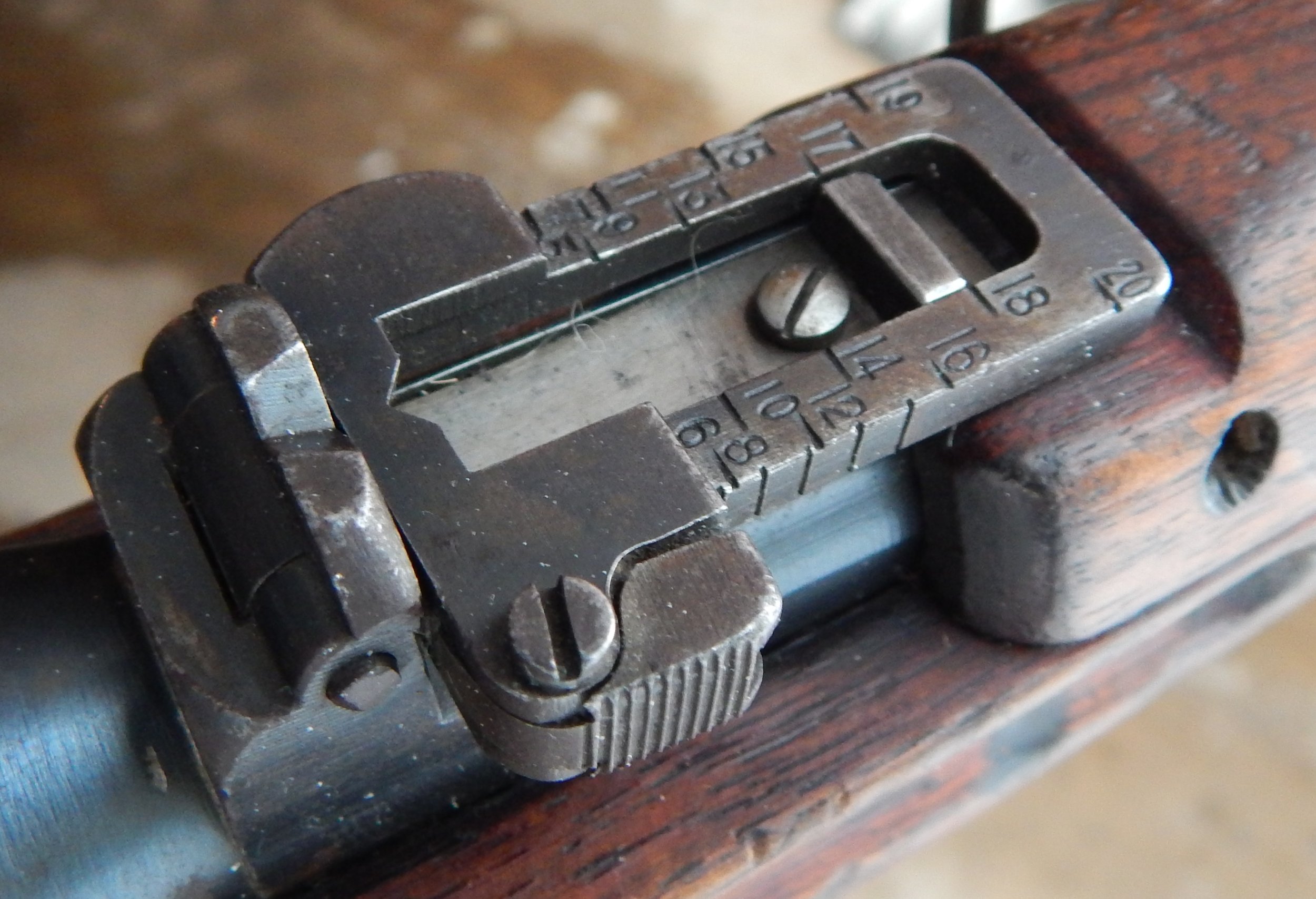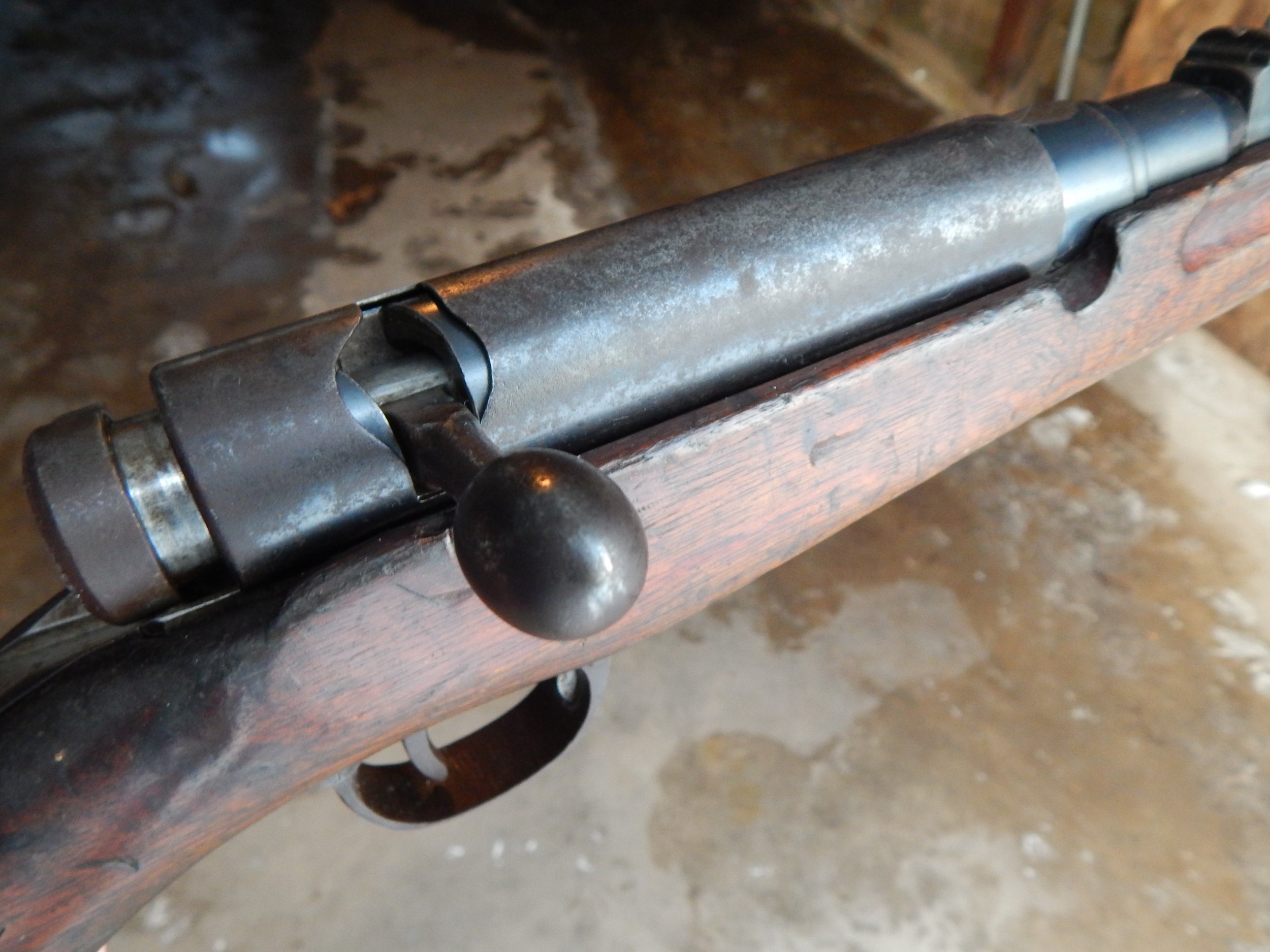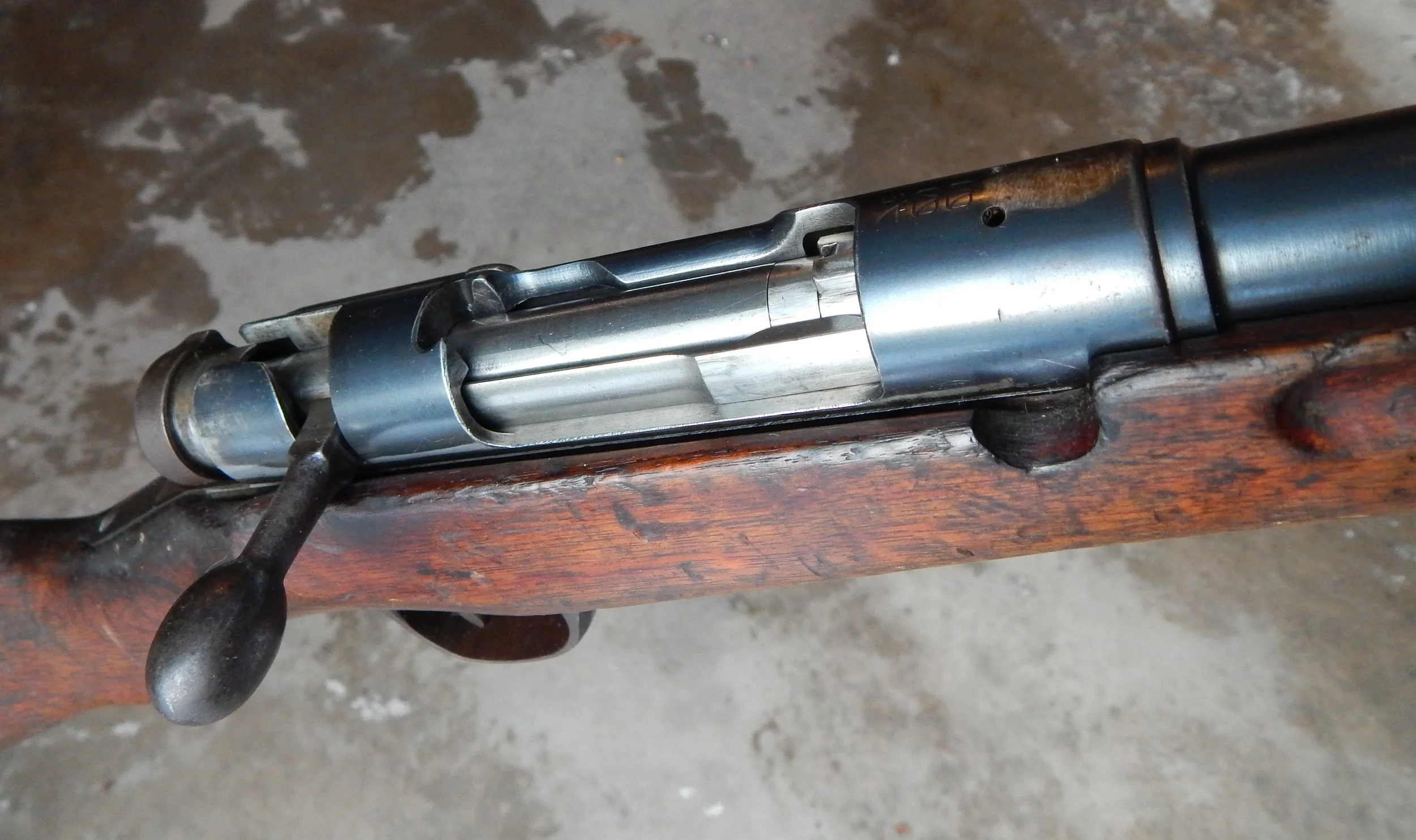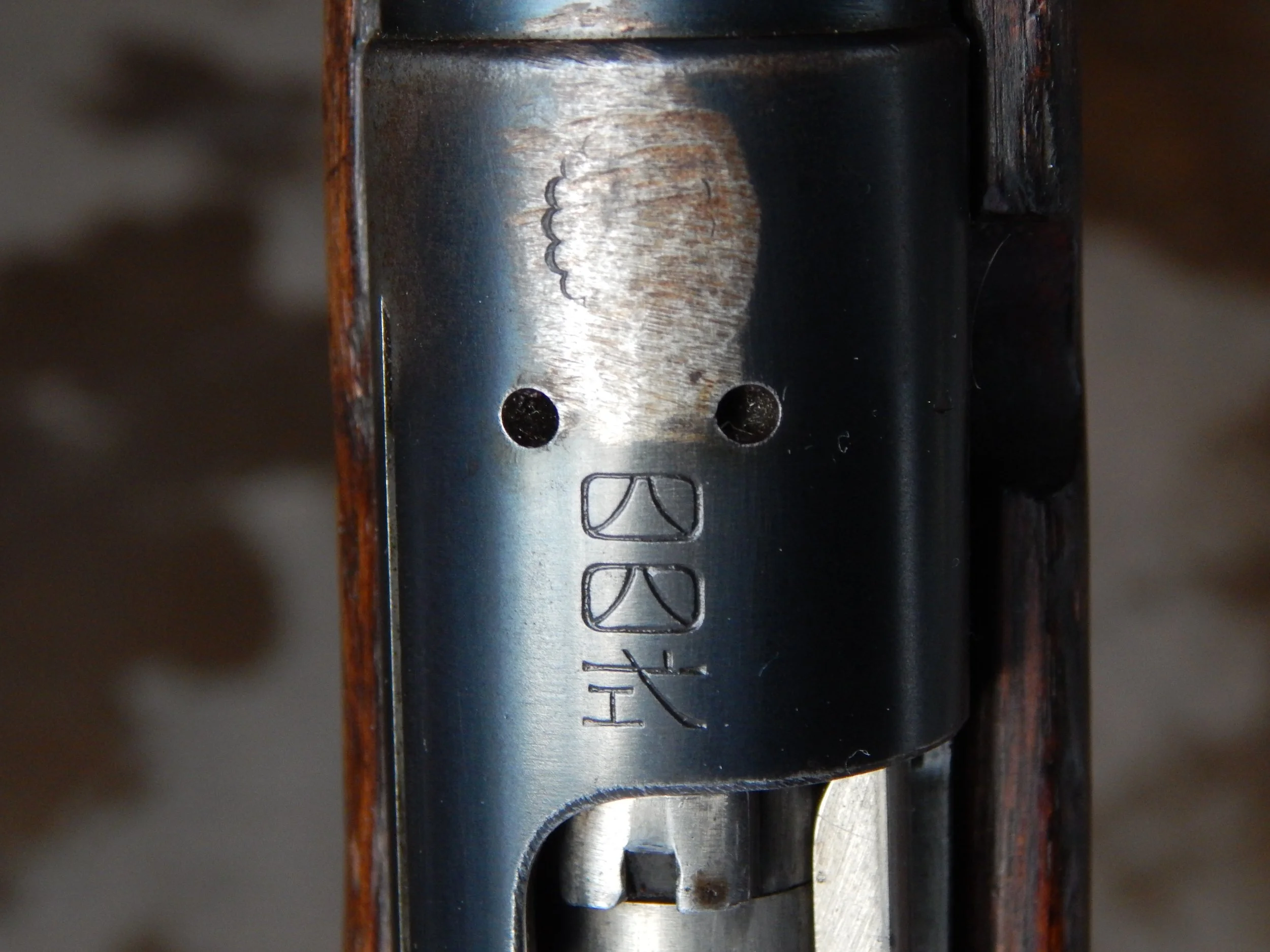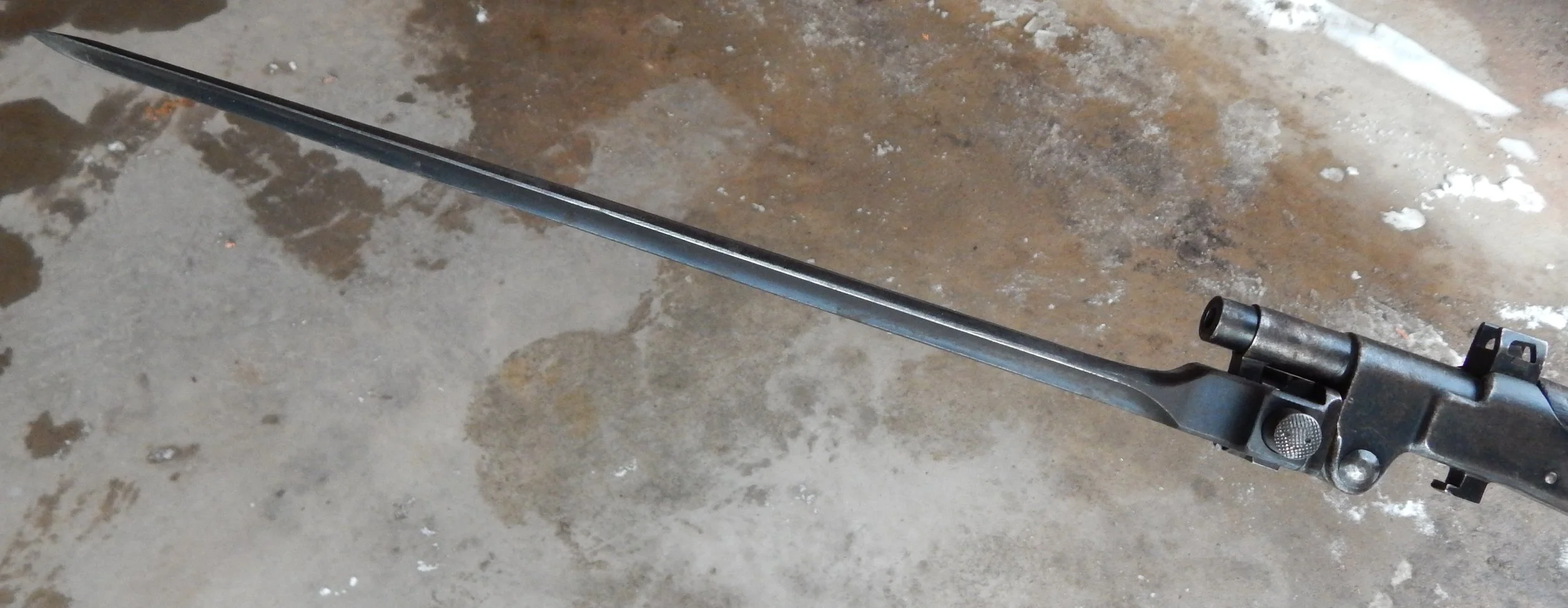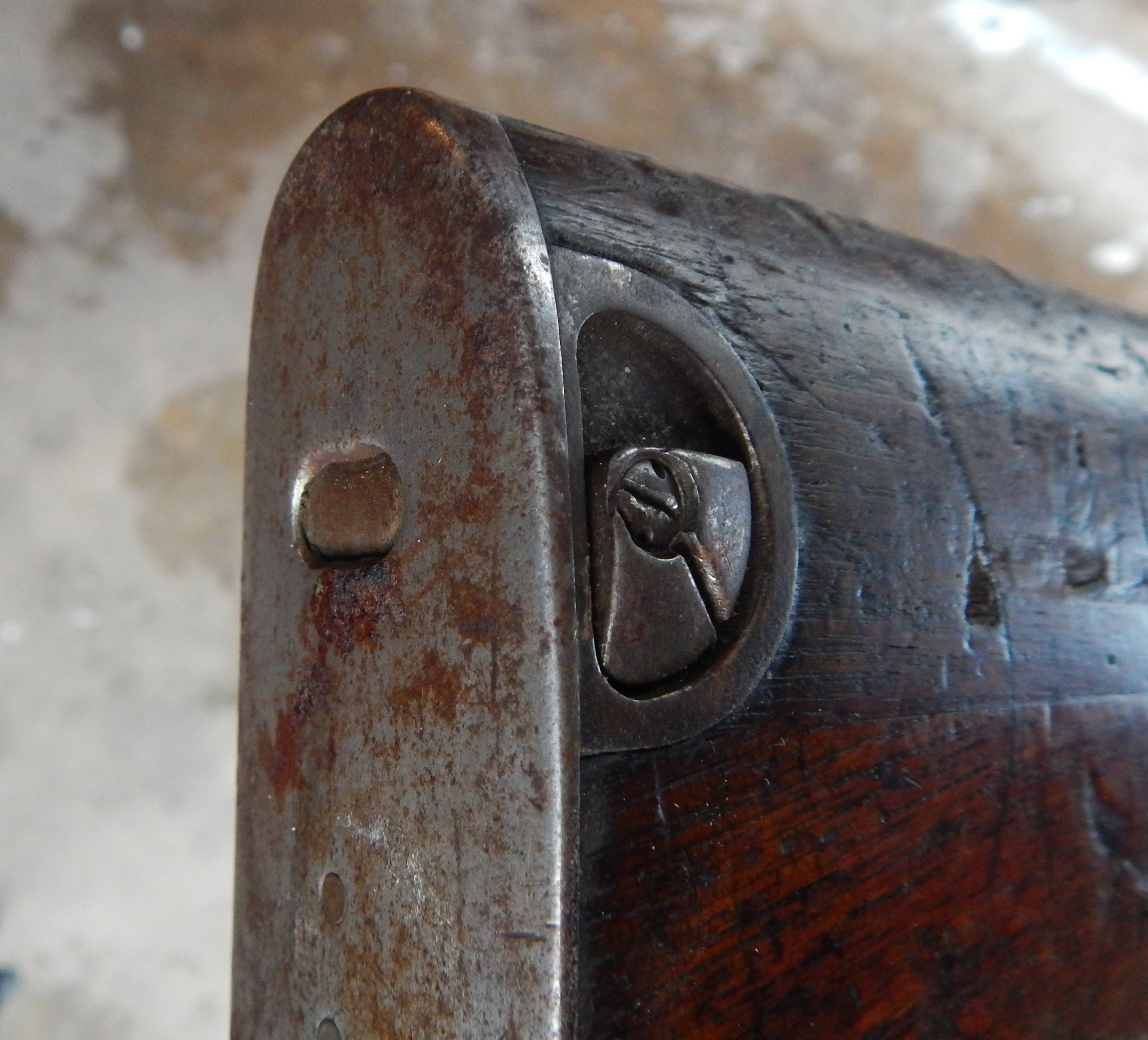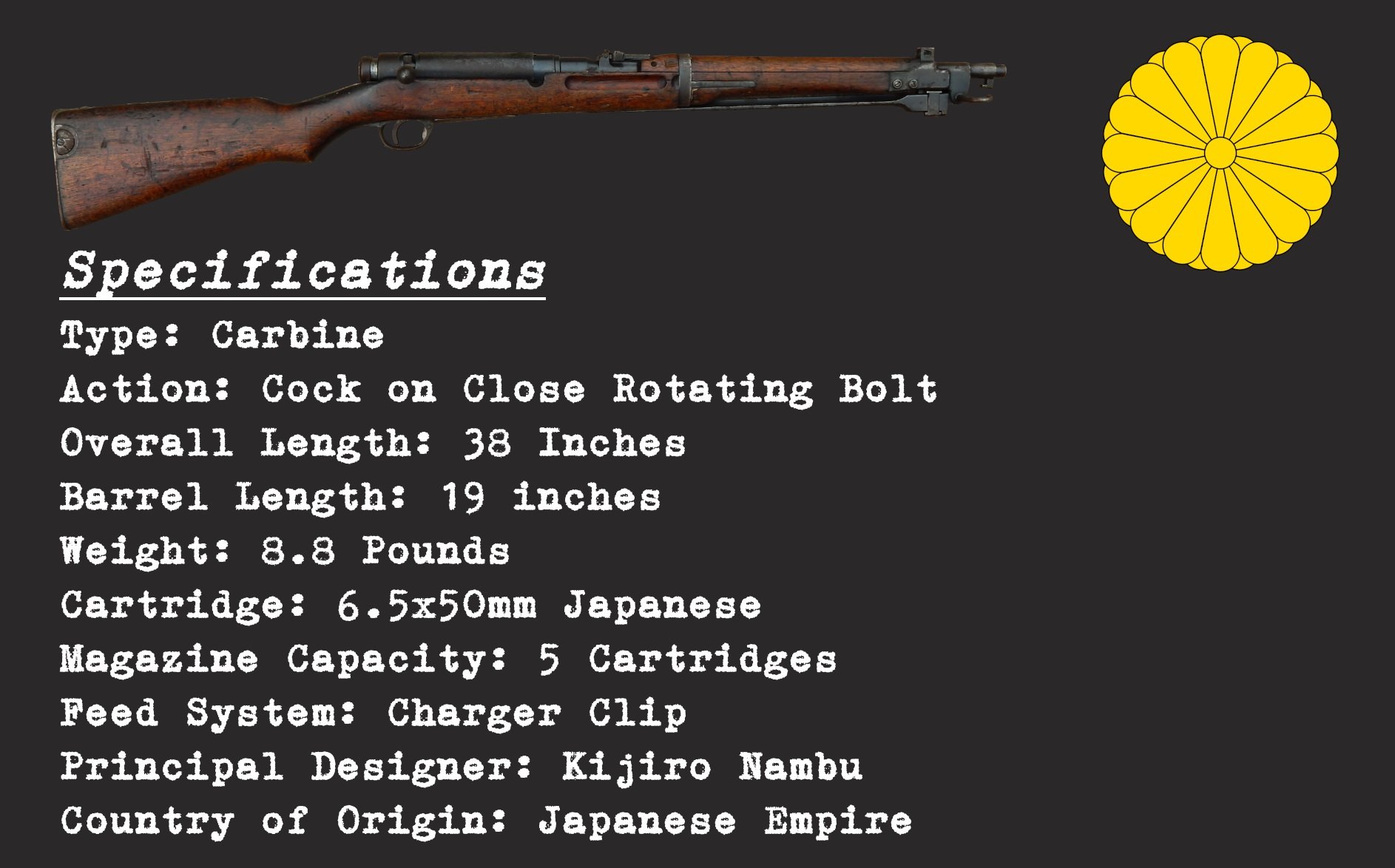Type 44 Arisaka
Despite the success of the Type 38 Arisaka rifle and carbine, the cavalry forces of the Imperial Japanese Army desired a variant that eliminated the need for a seperate bayonet.
In 1905 the Arisaka Type 38 rifle entered service with the Imperial Japanese Army to replace the more complicated Arisaka Type 30. The new rifle, designed not by Colonel Nariakira Arisaka but by Kijiro Nambu based on Arisaka’s original Type 30 design, was a quick success, along with a shorter carbine model. Despite this, both the Type 30 and Type 38 carbines had some issues in the eyes of Japanese cavalrymen, and the resulting requirement led in 1911 to the Type 44.
The rear ladder sight uses a simple “v” notch, with a 300 meter battle sight and the ladder adjustable from 500 to 2,000 meters
The History
The Type 30 Arisaka rifle and carbine had been the first smokeless powder design placed into service with the Imperial Japanese Military, entering use in 1897 and used as standard issue during the Boxer Rebellion of 1900 and the Russo-Japanese War of 1905. Despite the Empire’s success in both of those conflicts, the Type 30 had several noted deficiencies. The Imperial Navy, in particular, noted issues with feeding as well as jamming issues and complicated maintenance. The result came in 1905, when Kijiro Nambu completely redeveloped the rifle from the ground up, using a simplified action based in large part on the German Mauser 98 along with a number of other features, adopted in 1905 as the Type 38 rifle, named for the 38th year of the Meiji Emperor.
The front sight is protected, with the protectors integral to the very large bayonet assembly. Also note the side mounted hook, which was used for stacking of arms as well as a guard for use during bayonet training
With the new rifle came a carbine to go along with it, with the Type 38 Carbine being simply a much shorter version of the rifle with a correspondingly shorter range sight, along with an integral sight protector, still taking the standard Type 30 bayonet shared with both the Type 38 rifle and the Type 30 rifle. This was seen as an issue for the mounted forces of the Empire, leading to the design and adoption of the Type 44 Carbine in 1911.
The action of the Type 44, with the mechanism securely beneath the sliding steel dust cover
The Type 44 was mostly distinguished by its large underfolding bayonet, intended to allow the cavalry to omit the Type 30 Bayonet from their inventory, as the sabre served to make space on the belt a premium as well as render the long Type 30 redundant. The weapon would also find popularity with other units after its adoption, who also appreciated the utility of a short carbine with an integral bayonet.
The action without the cover, the Mauser heritage on full display
The Type 44 would first see major action in the First World War, with the carbine seeing use by Japanese cavalry during the Siege of Tsingtao in 1914, but not export to allies during the conflict, with the Japanese electing to keep these new and popular carbines closer to home. With the Japanese invasion of China in 1937 cavalry would see significant use both in an attack role against Chinese forces, as well as as mobile response units in the vast expanses of occupied China, where they were easier to support as well as more available than mechanized units to respond to guerilla fighters. Many would also remain in the Home Islands for reserve use, and they would also appear throughout the Asia-Pacific Theater of the Second World War. General issue of the Type 44, like other Arisaka variants, would end with the fall of the Japanese Empire in 1945, although some would remain in use across Asia for decades to follow with irregular forces.
The receiver of the Type 44, with the Japanese characters for “Four-Four Type”, or Yon Yon Shiki (四四式). The Imperial Chrysanthemum has been ground off this example at the end of the Second World War. Also note the dual gas escape holes
The Design
The Type 44 is, mechanically, identical to the Type 38 rifle. It is a cock on close rotating bolt action rifle, using a modified Mauser 98 pattern bolt with a long claw extractor. It feeds the semi-rimmed 6.5x50mm cartridge from a five round internal box magazine, fed by stripper clips. The action notable also includes a sliding steel dust cover, intended to keep mud and debris out of the action. It bears note here that these covers were never removed by the Japanese and discarded, as is often cited in popular myth, with the vast majority being instead discarded by US solders who captured them, likely due to the difficulty in inserting the bolt with it attached. The noise level is negligable, and of course is generally directly after the rather loud discharge of the weapon, leaving this myth akin to the M1 Garand “ping” myth.
The folding bayonet of the Type 44 is notable much larger and more reinforced than most contemporary designs. Note the large knurled release button on the side of the blade, and the locking stud under the barrel
The main difference is in the shorter rear sight, and of course the massive folding bayonet with it’s attachment point near the muzzle. The blade itself is a fifteen and a half inch long steel spike, locked with a very large lucking lug actuated with a button on the left hand side of the weapon. The mount itself also serves as the front band, as well as having the sight protectors integral. Furthermore, it extends along the side of the sock and is retained with two large screws for added strength. Since this attachment prevented the traditional placement of the cleaning rod, the rod was moved to a compartment in the butt of the rifle, while the stacking function of the rod was given to a pronounced hook on the right side of the mount.
The sling attachments are located on the left side of the rifle, rather than on the underside as seen on the Type 38 Infantry Rifle, and unlike the side mounted swivels on the Type 38 Carbine, the Type 44 has a notable tilt to the forward swivel, intended to make it more comfortable for mounted use.
The bayonet in the extended position
This Example
The example seen here is what is known as a first variation, with the second and third being consecutively more reinforced bayonet mounts. It was produced by the Tokyo Artillery Arsenal, also known as the Koishikawa Arsenal, in 1928, which would be destroyed in the Great Kanto Earthquake of 1935, whereupon production would shift to several arsenals, with Kokura using the old Koishikawa markings after the quake. The rifle seen here has matching assembly numbers on all parts aside from the bolt, which although an early type is mismatched, as it the original dust cover.
The butt of the Type 44, with its distinctive compartment for storing the cleaning rod segments. The latch on the side is intended to be operated with a cartridge rim
The Imperial Chrysanthemum stamped on the receiver, which indicated ownership by the Emperor, was removed on this example, as was generally done after the surrender of Japan in 1945, which is also consistent with the mismatched bolt, as during surrender bolts and rifles were cast into separate piles, with US troops allowed to select a rifle and bolt at random if they desired for a trophy. The rifle also features notable wear on the wood near the left side grasping groove, likely due to extended time spend slung on the back of a Japanese soldier.
The 6.5x50mm Japanese cartridge
Opinions
The Type 44 is certainly an improvement over the full size Type 38 infantry rifle, with its compact size. The folding bayonet is also among the strongest such weapons the author has ever encountered, with a massively overbuilt locking assembly as well as a very large, heavy steel blade. With the light recoil of the 6.5x50mm cartridge this makes for a potent combination, although it should be noted that the author has not yet been able to acquire a standard Type 38 carbine for comparison, and generally has a predilection toward the detachable bayonet, owing in no small part to the more common use of such a device as a tool than a weapon, although it must also be noted that Japanese doctrine at the time favored bayonet combat far more than western nations.
The basic operations of the Type 44
Japanese cavalry armed with Type 44s in Linfen, China, 1938
Observed Values and Frequency
Updated: February, 2024
AVERAGE VALUE (USD): $750 - $1,200
FREQUENCY: Rare
COLLECTOR’S NOTES: Collectors place a high value on the intact Chrysanthemum seal, as well as the presence of accoutrements such as the dust cover and cleaning rod.
Three variations exist in the bayonet mounting arangement
